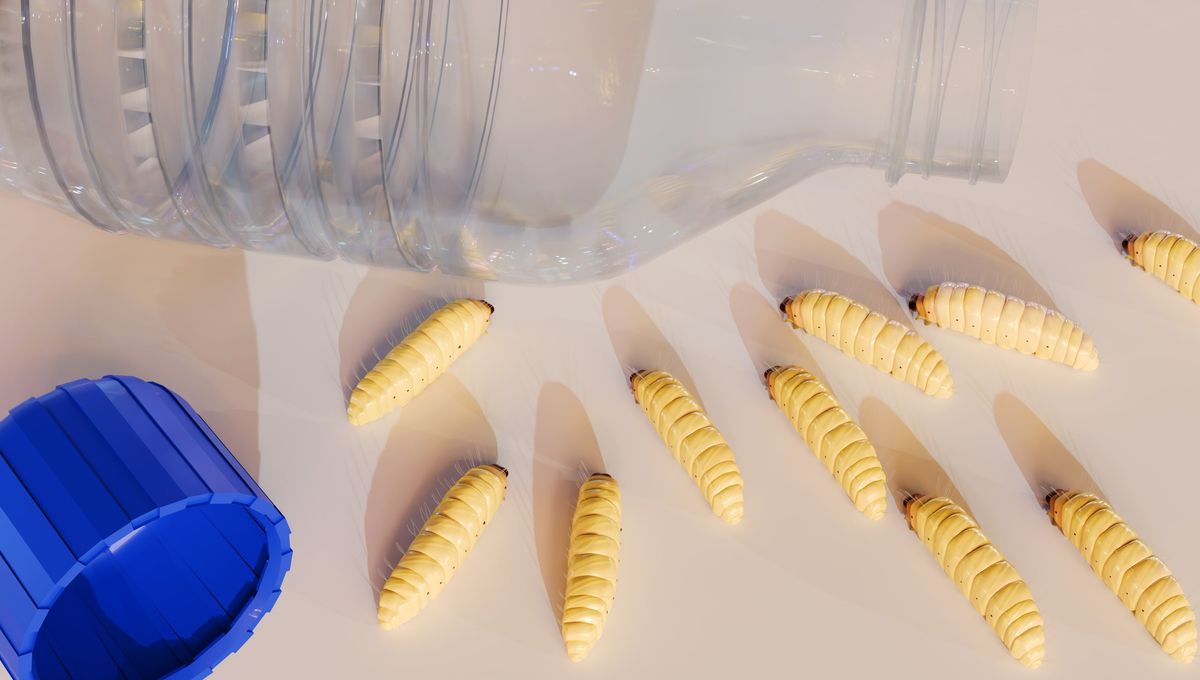
Why wasn’t this ever mentioned in The Very Hungry Caterpillar? It turns out, some caterpillars aren’t content with eating through apples, salami, and a piece of cherry pie – they’re insatiable gluttons of plastic bags too.
The caterpillars of the greater wax moth (Galleria mellonella), known as waxworms, are one of the few animals that can eat and degrade polyethylene, a chemically resilient material that can take decades, if not centuries, to fully degrade in the natural environment.
The plastic-munching abilities of waxworms were first discovered in 2017, but a new study has taken a deeper look at how the consumption of plastic affects their health. By doing so, the researchers hope to uncover whether these hungry caterpillars have the potential to be used as tools in plastic clean-up operations.
“Around 2,000 waxworms can break down an entire polyethylene bag in as little as 24 hours, although we believe that co-supplementation with feeding stimulants like sugars can reduce the number of worms considerably,” Dr Bryan Cassone, a Professor of Insect Pest and Vector Biology in the Department of Biology at Brandon University in Canada, said in a statement.
“However, understanding the biological mechanisms and consequences on fitness associated with plastic biodegradation is key to using waxworms for large-scale plastic remediation,” explained Cassone.
The waxworms can degrade plastic thanks to two enzymes in their saliva that oxidize and depolymerize the plastic. It’s believed they evolved these unique chemical tools because they live and grow in beehives where they feed on beeswax, a substance chemically similar to plastic.
In the new research, scientists have shown that the waxworm has also developed a metabolic process that breaks down the plastics into lipids and stores them as body fat.
“This is similar to us eating steak – if we consume too much saturated and unsaturated fat, it becomes stored in adipose tissue as lipid reserves, rather than being used as energy,” said Cassone.
However, a diet of solely plastic isn’t the healthiest, and it certainly won’t guarantee the caterpillars a long, happy life. Cassone commented: “They do not survive more than a few days on a plastic-only diet and they lose considerable mass.”
In other words, simply chucking waxworms onto islands of plastic trash isn’t going to be a viable solution to pollution in the long term. Nevertheless, the researchers believe they’ve identified a few promising ways these caterpillars could still play a role in tackling the plastic crisis.
“Firstly, we could mass rear waxworms on a co-supplemented polyethylene diet as part of a circular economy. Secondly, we could explore the re-engineering of the plastic biodegradation pathway outside the animal,” said Cassone.
Additionally, the large-scale production of waxworms could build up a significant surplus of insect biomass, which could be used for commercial fish food.
Who knows, perhaps the plastic floating in Earth’s oceans could end up being processed by caterpillars, then fed back to the fish it once threatened. And so, the circle of life continues!
The new research is being presented at the Society for Experimental Biology Annual Conference in Antwerp on July 8, 2025.
Source Link: Very Hungry "Plastivore" Caterpillars Get Fat From Eating Plastic